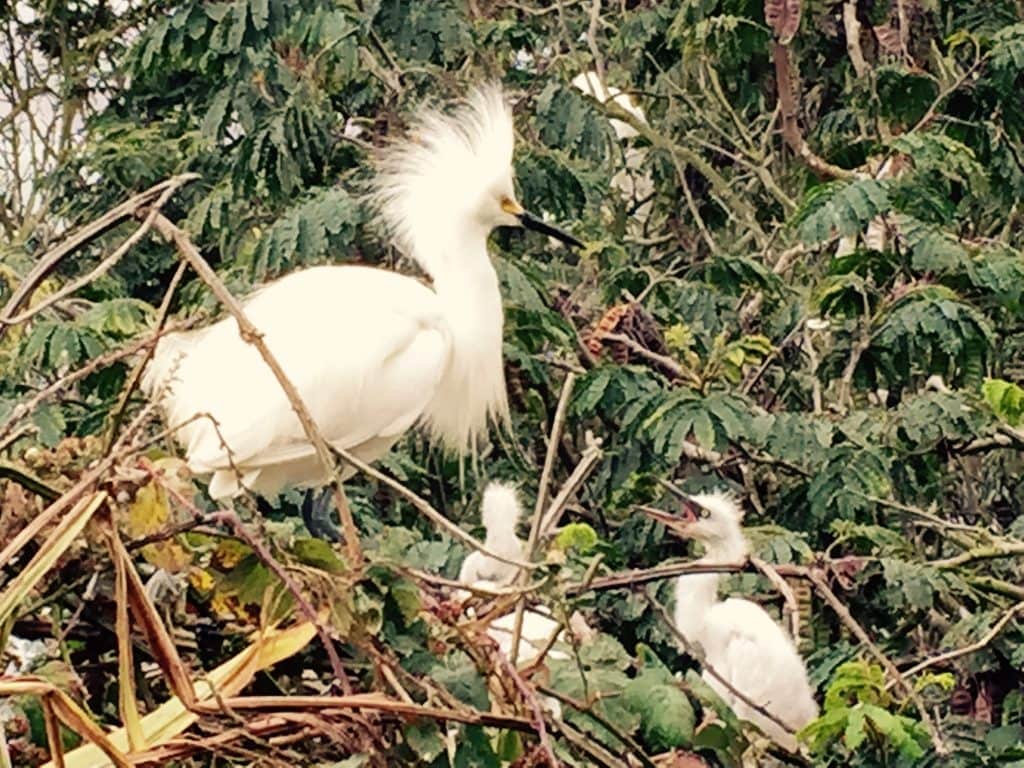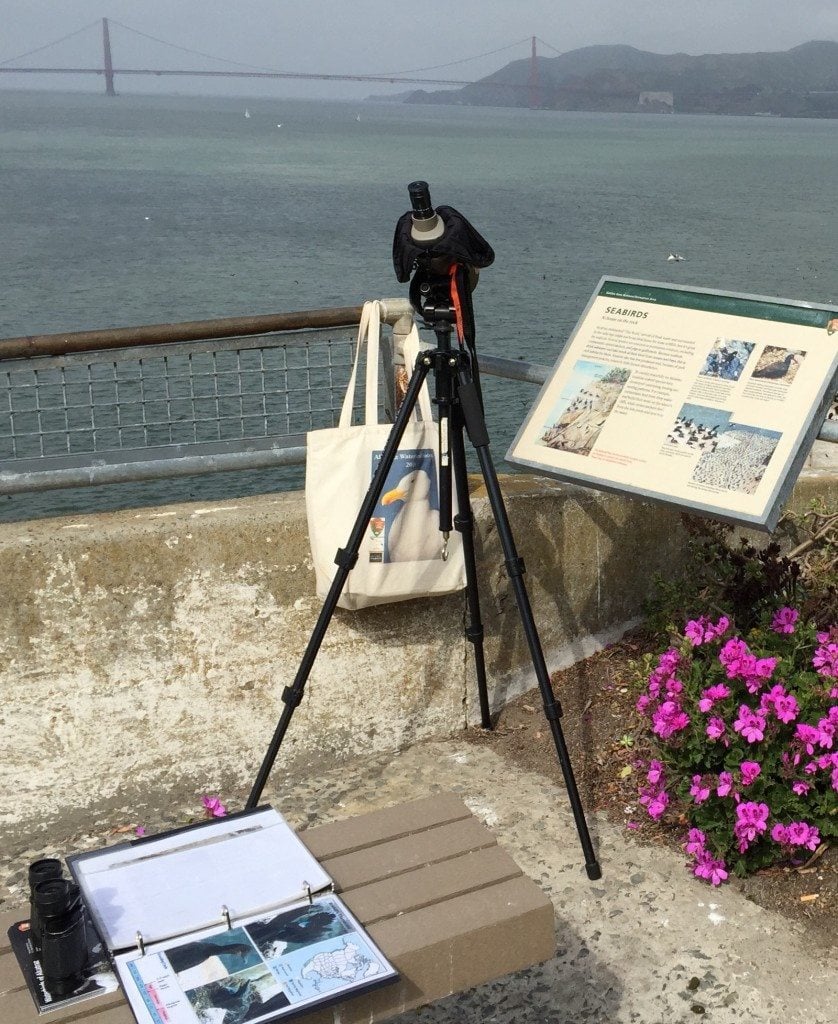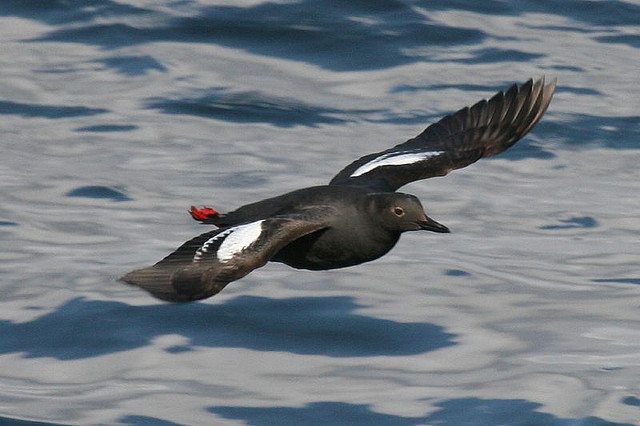Alcatraz docents show avian side of “The Rock”
By Bonnie Brown
When I heard about the Waterbird Docent Program on Alcatraz last year, I knew it was the volunteer opportunity for me. I have swum from Alcatraz to San Francisco many times for fun and have often seen birds during those swims. Actually, swimming in San Francisco Bay was one of the ways I became interested in birding. The other was a volunteer trip I took to Tanzania years ago, where we saw so many colorful, exotic, and beautiful birds. I was just amazed and it stuck with me.
A friend and I signed up for the 2015 Master Birding class offered by Golden Gate Bird Alliance and California Academy of Sciences. It’s a year-long program and was a fantastic learning experience. One of the requirements was to put in 100 volunteer hours over a two-year period. Volunteering is fun and if you like birds, I can’t think of a better place to volunteer than Alcatraz, where you can help visitors from all over the world learn a little about the bird life.
Alcatraz National Park is a large and important breeding colony for several different egret, heron, and seabird species including Western Gulls. The island is home to the San Francisco Bay’s only Brandt’s Cormorant colony and one of its most important Black-crowned Night-heron colonies. You can get up close and personal with the birds in their rookeries, especially the Snowy Egrets. Nesting season runs from April through August. It’s an awesome time to visit and observe avian natural history.

How does one get involved? Well, first you reach out to the Docent Coordinator, then you attend a mandatory and very interesting eight-hour training on the Rock in the springtime. Finally you commit to approximately eight hours of volunteering each month. The Docent Coordinator is Ed Ryken, edwbear@earthlink.net.
Volunteers sign up using a group Yahoo calendar, and newcomers can choose to pair up with experienced volunteers. The National Park Service is friendly, accommodating, and very appreciative of volunteers. You get access to the staff quarters and kitchen. All equipment is available free to the volunteers – scope, tripod, binoculars, radios, brochures, counters, and the carts to lug all this equipment up and down the hills of Alcatraz. You’re also outfitted with official clothing, as demonstrated in the picture below.

The Alcatraz docent program has three goals: 1) increase awareness for Alcatraz waterbirds, 2) generate appreciation for nesting waterbird species through interpretation, and 3) reduce potential human impact on the birds and their habitat.
In 2015, 35 docents volunteered a total of 1,265 hours and made over 12,000 visitor contacts. Volunteers use the counters to track their visitor contacts, which is any conversation that involves birds. I would smile and say hi to people as they walked by and occasionally offer to take a picture of them. Then I would add a bird-related comment or question, or invite them to look at the birds through the scope. That’s basically how I would add another count on my counter! It became a fun little game. It was a joy to meet so many nice and interesting people from many countries.
Docent responsibilities include staffing a wildlife viewing station (you get to choose where), and explaining the activities and ecology of the breeding birds. We tend the spotting scope and/or lend binoculars to help visitors get a closer look at the birds and gain a better appreciation of the colonies’ dynamics, and we respond to their questions and inquiries. Sometimes people were only mildly interested in what I had to say, but as soon as they looked through the scope or binoculars and saw either eggs on a nest or a baby chick, something clicked and they started asking questions. Those were great moments for me too! My favorite place to set up a scope was above the Brandt’s Cormorant Colony, as shown in the photo below.

From this vantage point, sometimes we could spot Pigeon Guillemots in their nests or on the water. They are really beautiful and look dramatically different from all other Alcatraz birds: Their plumage is all black with white wing patches. and they have a bright red mouth lining and bright red feet. (They’re in the auk family which also includes puffins. )

What skills do you need to be an Alcatraz docent? An interest in wildlife, especially birds. Good people skills are a must, as well as a willingness to work in an environment that, while scenic, can sometimes be foggy, cold, or hot.
I’m planning on returning next year to volunteer on Alcatraz and I highly recommend it to others. Maybe I’ll see you on the Rock next year!
——————————————–
Bonnie Brown is an accounting operations manager for Gilead Sciences in Foster City, California. She is an avid open water swimmer and birding enthusiast. She lives in Kings Mountain, the coastal hills above Half Moon Bay, with her husband Jeff and their three friendly dogs.
